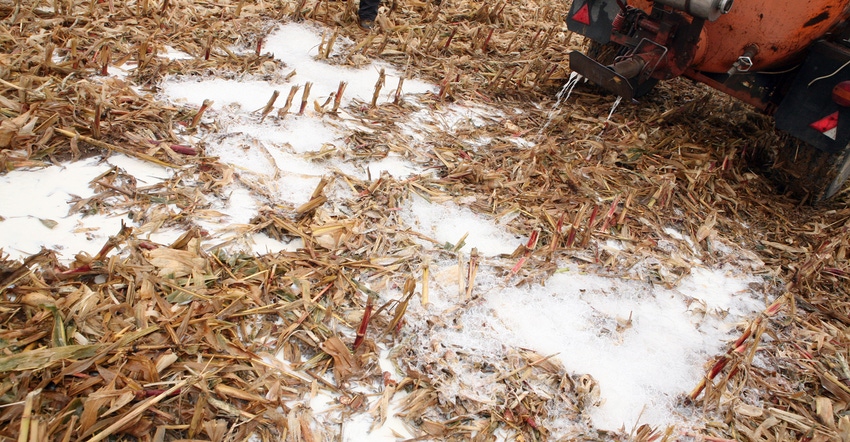April 24, 2020

The Minnesota Board of Animal Health and the University of Minnesota have compiled online resources for farmers who may need to consider either dumping milk or composting livestock on the farm.
MBAH teamed up with other state agencies and pulled together a new Emergency Carcass Disposal Resources webpage for producers during the COVID-19 pandemic.
Experts around the state are available to answer carcass disposal questions. Review the Carcass Disposal Contacts map to find an expert in your area of the state to call or email.
If you are thinking about animal composting, MBAH suggests that your first step is to speak with one of MBAH’s experts and talk through the carcass disposal option that’s right for your situation.
Some of the things you can discuss with MBAH experts include:
How to source carbon (example; woodchips) if you plan to compost.
How to choose a site for composting on your farm and how to form a compost pile correctly.
What you need to know about rendering and what steps you should take to work with a rendering company.
 WHO TO CONTACT: The Minnesota Board of Animal Health provided this map listing contact information for farmers who want to find out about carcass disposal.
WHO TO CONTACT: The Minnesota Board of Animal Health provided this map listing contact information for farmers who want to find out about carcass disposal.

You can also download the Carcass Disposal Guide in multiple languages, including English, Spanish, Hmong and Somali.
Additional resources
The Minnesota Pollution Control Agency also has a role in the safe environmental disposal of carcasses in the state. It has developed specific resources for the COVID-19 Response for Agriculture.
Additionally, you can view and download copies of the PCA’s guidance for dairy and swine producers during COVID-19.
The University of Minnesota Extension also has compiled resources for surplus milk disposal.
Extension manure management specialist Melissa Wilson, Extension manure educator Chryseis Modderman, and Extension engineers Erin Cortus and Kevin Janni say that two options for the milk are land-spreading or adding it to manure storages. Either can be done and are good ways to recycle the nutrients in milk, but there are potential issues to be aware of. Always check local ordinances to see if either of these are allowable.
Direct land application
For the same reason milk is a valuable food product, it can also be a good source of nutrients for crops. It has a high nutrient content: a University of Wisconsin report says milk has the equivalent of 46 pounds of nitrogen, 26 pounds of phosphorus and 17 pounds of potassium per 1,000 gallons.
It is different from manure, however, because many of the nutrients are in a highly soluble, plant-available form.
Similar to manure, milk needs to be land-applied in a way that protects water quality. Nutrient leaching and runoff are concerns, especially this early in the year when there are not yet crops on the fields and hay pastures are not growing as actively as later in the year.
According to Minnesota Pollution Control Agency rules, the nutrients in the milk need to be accounted for in nutrient management planning. Avoid applying to fields where manure was applied this spring or the previous fall. Do not apply more nitrogen than the following crop needs.
Collect a milk sample and send it to a lab for analysis. This way you will know how much nutrients you applied later on.
Follow all guidelines for manure application. Do not apply the milk within required setbacks from sensitive features such as water bodies, ditches, tile intakes, sinkholes, etc. Consider using larger setbacks if possible. Minimum state requirements can be found online.
Milk will have a strong odor as it decomposes in the field. Inject or incorporate as soon as possible.
Avoid applying milk immediately before or after a rain event. The interactive Minnesota Runoff Risk Advisory Forecast map can help determine when a runoff event is likely in the next 24 to 72 hours.
Adding milk to manure storages
If you have the space, adding the milk to manure storage may be a better option. While this will eventually end up being land applied, it gives you more time to plan for proper nutrient management.
Adding milk to manure will change the manure’s nutrient content. Consider collecting a manure sample from storage and getting it tested prior to application so you can adjust application rates appropriately.
Odor production, or how crusts form on the top of the storage, will likely be impacted. This could impact how you agitate your storage later in the season. The fats in milk may plug equipment as well. If this happens, rinse with water often.
If you lack the storage space, try contacting neighbors to see if they can take your milk and put it in their storage. Be sure to follow all MPCA rules for manure application.
Make sure you do not dump milk down the drain with your milk house wastewater treatment system, which is not designed to handle milk that cannot be added to the bulk tank (milk from fresh or treated cows). The biological oxygen demand will overload the treatment system.
Marin Bozic, U of M dairy economist, reminds dairy farmers to keep records that include the date, volume of milk, reason for dumping and disposal site. This recordkeeping will help if state or federal programs become available to help farmers with lost revenue during the COVID-19 pandemic.
Additional resources
MPCA has guidance available on how to dispose of excess milk during the COVID-19 crisis, as well as a response to COVID-19 and regulatory flexibility.
Questions? Contact your local County Feedlot Officer or MPCA Feedlot Program staff member.
Source: The Minnesota Board of Animal Health and University of Minnesota Extension, which is solely responsible for the information provided and is wholly owned by the source. Informa Business Media and all of its subsidiaries are not responsible for any of the content contained in this information asset.
You May Also Like




